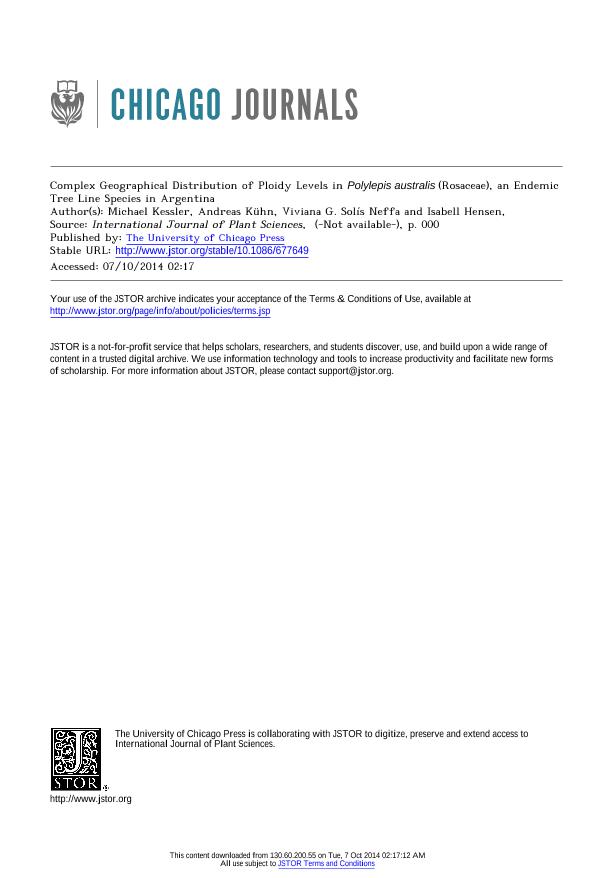Artículo
Complex Geographical Distribution of Ploidy Levels in Polylepis australis (Rosaceae), an Endemic Tree Line Species in Argentina
Fecha de publicación:
09/2014
Editorial:
Univ Chicago Press
Revista:
International Journal Of Plant Sciences
ISSN:
1058-5893
e-ISSN:
1537-5315
Idioma:
Inglés
Tipo de recurso:
Artículo publicado
Clasificación temática:
Resumen
Premise of research. The geographical distribution of ploidy levels provides insights into evolutionary pathways. For the subtropical tree line species Polylepis australis (Rosaceae), we tested the hypotheses that (1a) incidence of polyploidy is higher in the northern parts than in the southern parts of the species range due to the presence of related species that might favor hybridization (allopolyploidy), (1b) incidence of polyploidy is higher in the southern part of the range because the species here presumably reaches the limit of its environmental tolerance (autopolyploidy), and (2) ploidy levels increase with elevation, as polyploids are believed to perform better in stressful environments. Methodology. We used flow cytometry to assess the ploidy levels of 361 individuals from 27 populations across most of the distribution range of the species in two disjunct Argentinean high mountain regions. Pivotal results. The northern stands had lower ploidy levels (diploid) than the southern populations, in which we found mainly tetraploids intermixed with diploids, triploids, and a single hexaploid. We did not find any environmental correlates to the geographical distribution of ploidy levels. Conclusions. Polyploidy appears to have arisen in P. australis via autopolyploidy, either twice in different parts of the range or, more likely, once followed by long-distance dispersal. This is also supported by amplified fragment length polymorphism (AFLP) data from a previous study that confirmed higher numbers of AFLP fragments and private bands in the southern populations. The checkerboard distribution of ploidy levels in the southern Sierras de Co´ rdoba may represent a time capture of the spread of the polyploid condition. We propose that polyploidy represents a key factor to understanding the high morphological variation in P. australis and should be taken into account in ongoing reforestation activities.
Palabras clave:
Andes
,
Autopolyploidy
,
Polylepis
,
Rosaceae
Archivos asociados
Licencia
Identificadores
Colecciones
Articulos(IBONE)
Articulos de INST.DE BOTANICA DEL NORDESTE (I)
Articulos de INST.DE BOTANICA DEL NORDESTE (I)
Citación
Kessler, Michael; Kühn, Andreas; Solis Neffa, Viviana Griselda; Hensen, Isabell; Complex Geographical Distribution of Ploidy Levels in Polylepis australis (Rosaceae), an Endemic Tree Line Species in Argentina; Univ Chicago Press; International Journal Of Plant Sciences; 175; 8; 9-2014; 955-961
Compartir
Altmétricas




